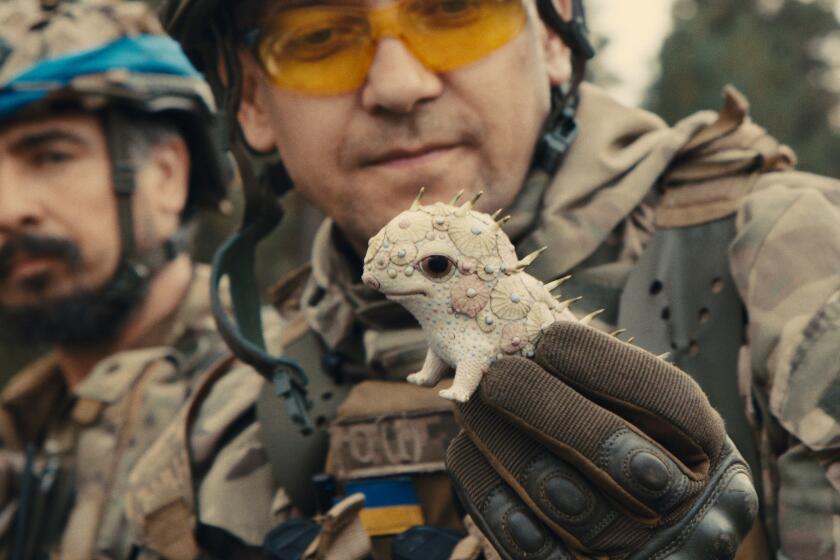Camera Obscura
- Share via
A smile hidden somewhere within his wild, sorcerer’s beard, Richard Risemberg seizes the homely Holga 120S unfortunate enough to be chosen as today’s display model. “I tell people they can customize ‘em,” says Risemberg, of Hollywood’s Freestyle Photo. He then hurls the Holga toward the floor. The camera hits it hard, with clips flying and film door bursting open. “Then they’ll get decent effects.”
Any damage only enhances the artistic merits of this $14.95, all-plastic camera made in China. The Holga 120S boasts only four focus knob postions: one head (close-up), three heads (less close-up), eight heads (even less close-up) and a craggy mountaintop (far). It offers two aperture settings, indicated by cartoons of sun and cloud. “The main selling point,” Risemberg says, “is actually the bad lens. It’s a single spherical plastic lens that gives you a soft-focus image.”
The Holga is the successor to the discontinued Diana, the legendary toy camera of the 1950s and ‘60s. With its light leaks, the Diana could render only the center with any clarity--images at the periphery melted away as hauntingly as a childhood memory.
The demand for the Holga may be fed by a contempt for the fully automatic 35-millimeter camera whose every parameter is so thoroughly pre-programmed. But the Holga also requires a surrender of the photographer’s vision--to the serendipity of product defects. “It’s an easy way of getting an artsy-fartsy effect without having to work hard,” Risemberg observes.
More to Read
Only good movies
Get the Indie Focus newsletter, Mark Olsen's weekly guide to the world of cinema.
You may occasionally receive promotional content from the Los Angeles Times.








